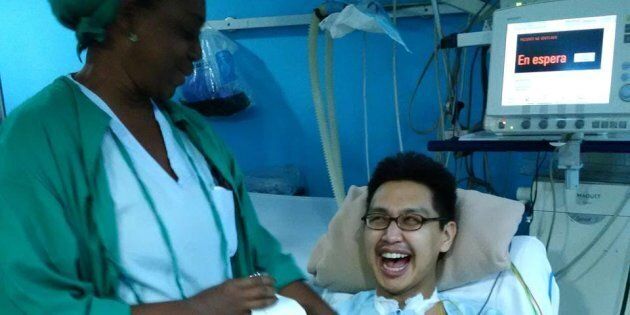
Tutalik Boychuk is not one to cry in public, but tears seemed inevitable in this situation.
She was in a busy Toronto shopping mall with a friend when her phone rang. She picked up and heard her father's voice. He told her someone wanted to speak to her.
One word did the trick. A whispered "hello", and the waterworks started.
It was Boychuk's brother Napu, calling from Havana, Cuba, a place he has had to call home for almost three years.

The siblings and their father Dan travelled to the Caribbean island in December 2015. The ultimate destination was Havana, but they decided to hit the beach in Varadero for a few days first.
On the first day, a Sunday, Napu went swimming with a new friend while Boychuk was still sleeping, she recalled to HuffPost Canada. His name was Andre.
That swim would change Napu's life.
"Napu was swimming in the ocean, and he got caught in a strong undertow current and basically drowned," Boychuk said.
"When they finally pulled him out of the water after quite a long time of not knowing where he was, he was all blue. They thought he was dead."
Napu, 29 at the time, was resuscitated after multiple attempts and taken to an emergency clinic.
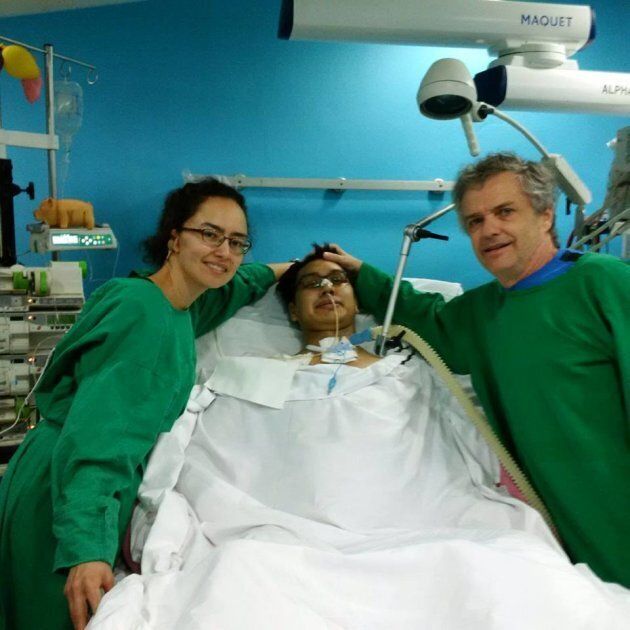
At this point, Boychuk and her father were still in the dark as to what was happening. They were told by hotel staff that two people were taken away from the beach. With Napu nowhere to be found, they went to the clinic to check who it was.
When Boychuk arrived, she said she saw a man who was "crying uncontrollably." He was wearing what seemed like underwear.
She said she felt bad for him, but was feeling rattled and needed to find her brother. She kept walking.
"Then I turn the corner and there's Napu on the stretcher. Then I look back at the guy crying uncontrollably as if someone died, and I realized, that's Andre. Napu's new friend."
Boychuk said she wasn't actually taking in much of what was going on. So much happened so quickly that she didn't even cry until later in the day.
Bad news, good news
Clinic protocol meant that Napu had to be taken to the nearest hospital, which was in nearby Matanzas.
This hospital was "dilapidated," she said, a bonafide "horror experience."
Luckily, Napu would not spend the night there. His condition was serious enough for him to be taken to a hospital in Havana.
A doctor there who spoke a bit of English explained the situation. He told Boychuk that Napu's neck had bent back so far in the accident that it broke some vertebrae in his neck.
In surgery, the doctor realigned all of the neck vertebrae "nice and straight again," she said, then screwed in a brace.
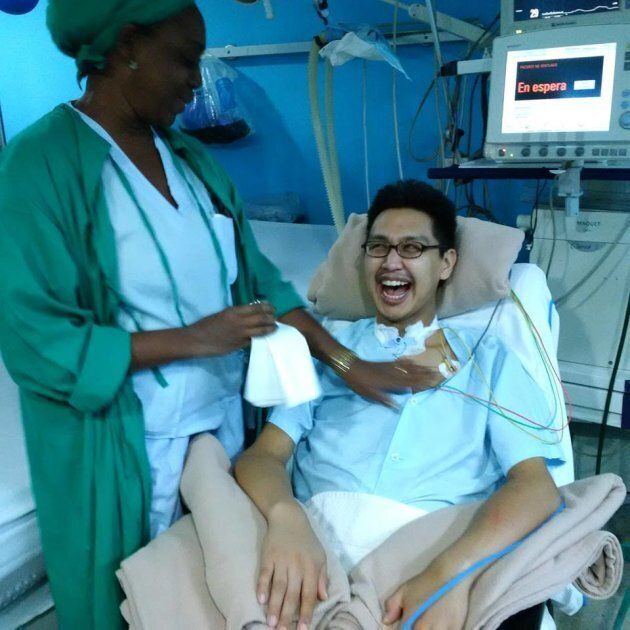
The bad news was that it was a spinal cord injury. The good news — relatively speaking — was that the spinal cord remained intact, Boychuk added. It was only "pinched."
For weeks after the surgery, Napu was on a ventilator because he had taken in so much sand and seawater into his lungs in the accident.
"He couldn't breathe," she said.
He couldn't speak, either. Boychuk said they were only able to communicate with Napu by reading his lips.
But hospital staff started "weaning" him off the ventilator. By the time Boychuk was back in Canada, Napu was regaining some control over his voice.
A few weeks later, in February 2016, her phone rang in in the mall and she heard that familiar voice whisper hello.
"I cried. I was overjoyed with emotion," Boychuk said.
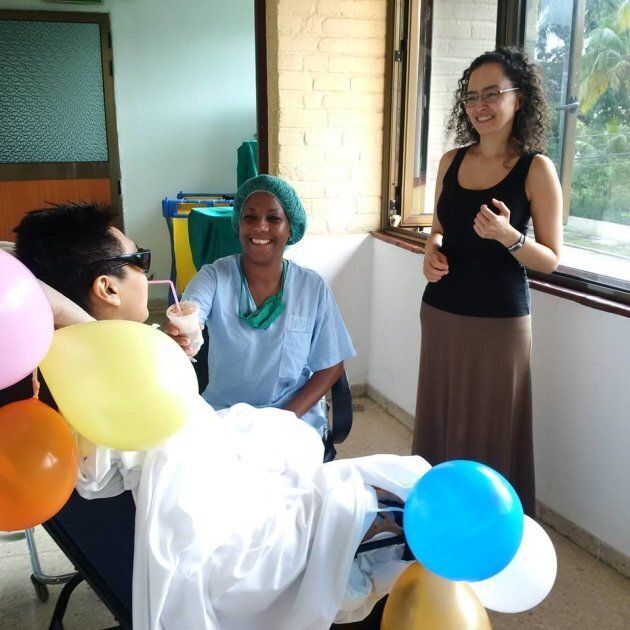
Home, for now
One of the questions that immediately pop up when Boychuk tells her brother's story is why he remains in Cuba.
The answer is very complicated, she said.
In the beginning, the plan was to bring Napu back to Toronto.
While her brother was in the hospital in Havana, Boychuk went for a coffee with Dan. The two had to decide who would accompany Napu on the emergency flight back home, since only one family member was allowed to accompany him. But the conversation became much more complicated.
"It was one of the most intense discussions I've ever had in my life, because here we were making a decision for Napu while he was sedated without getting his input."
She said was scared for her brother to fly in his condition, especially after the surgery, and they also felt like he was truly being taken care of there.
"I think the biggest reason was the really good care he was getting and how good we felt about how he was treated."
It's been really hard on my dad, he's been there the whole time with my brother.
Boychuk had also grown distrustful of hospitals back in Toronto after the experience her mother had fighting cancer, a battle she lost in 2003.
"My mom was a number, she wasn't even in a human being in those hospitals. At Cira Garcia [hospital in Havana], it was like Napu was a king. He was so well taken care of," she said.
"It was such a night and day difference to our experience in Toronto."
Another reason for staying — a heavy one, if her voice was any indication — was that Dan and Napu did not have much to come back to, not immediately at least. Dan didn't have a job, and his wife was gone.
Napu's dream of dancing professionally — of specifically becoming an the "first Inuk professional classical ballet dancer," as Boychuk put it — was deflated. He was just a semester away from finishing the performance dance program at Ryerson University.
It was decided: Napu would stay in Cuba to receive treatment at Cira Garcia. And so he did, for 145 days, until May 2016, when Dan rented out an apartment nearby to continue Napu's treatment.
This would become their home away from home and a de facto clinic where Napu would receive 24-hour care and physiotherapy.
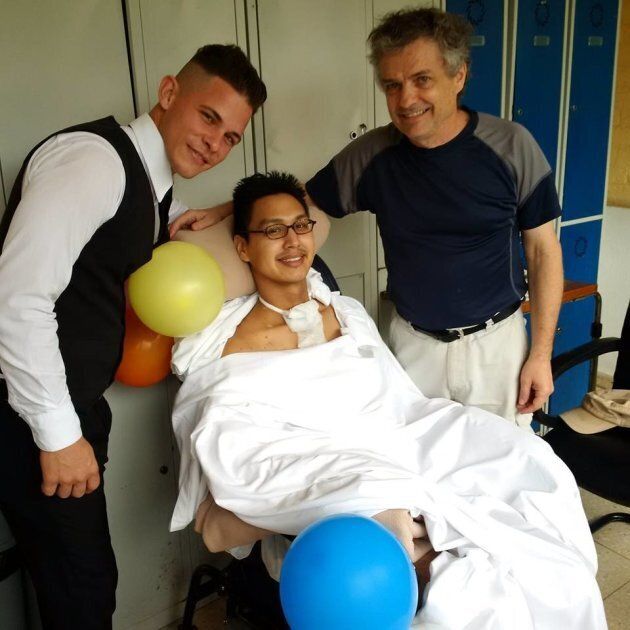
Napu and Dan are still in Havana. Boychuk visited them three times in 2016 and once last year. She has not been able to go so far this year. She couldn't afford it.
The costs of the 24-hour care, the apartment and the physiotherapy, coupled with the almost US$57,000 the family owes the hospital, have punched a huge financial hole in their lives.
A mix-up with insurance companies — Boychuk said Napu had both private insurance and a policy through his university — meant they were only covered until January 2016.
Dan managed to negotiate a monthly payment system with the hospital, but he doesn't make any income — taking care of his son is a full-time job. This leaves the burden on Boychuk.
The 42-year-old is shouldering the costs for the rare flight to Havana to see her family, for their apartment, for her current expenses, for Napu's 24-hour care and his physiotherapy.
All these people from different parts of Canada, they jumped in and did this for us.
She said friends and family have organized fundraisers on their own, which have raised thousands of dollars for Napu. A fundraiser in Iqaluit, where Boychuk used to work, raised $11,000. Ryerson University also donated $10,000, she added.
But even if it's cheaper to get the treatment in Cuba, it's still a huge financial challenge. So Boychuk turned to the internet.
She set up a GoFundMe campaign called "Napu's medical and recovery fund" in early 2017. It has raised more than $36,000 since. Boychuk receives money from the campaign periodically.
"All these people from different parts of Canada, they jumped in and did this for us," Boychuk said.
'Millimetre by millimetre' progress
Napu's progress has been "millimetre by millimetre," Boychuk said.
First, he re-learned to move his shoulders, then his arms, although you "really have to stare" to notice the movement, Boychuk said.
To describe the limited mobility he had after the surgery and, more importantly, to demonstrate just how much of a positive attitude Napu shows every day, Boychuk sent over this YouTube video:
Napu is seen lip synching to Queen's "Bohemian Rhapsody," making hospital staff around him laugh.
Boychuk said he's lifting weights with his arms these days, but still doesn't have full use of his hands. She sent him special handles to use on cutlery to feed himself some times, but he still needs his caregivers for essentially everything he does.
"He's always able to do something that he wasn't able to do a month or two ago," she said. "There's still progress ... however it's been a very, very long and slow recovery. Here it is, almost three years [later] and he still doesn't have use of his hands."
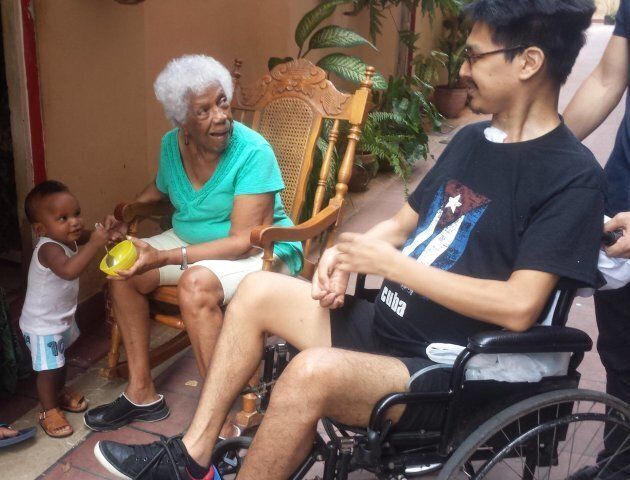
Boychuk said Napu has been bedridden and using a wheelchair so much for so long that he's developed a pressure ulcer, so he might need more surgery.
A book for Napu
Napu, now 32, is still passionate about dance, Boychuk said. He wants to dance again.
She said he wants to look into completing his degree in the new year, since his last semester doesn't include any performance-related assignments.
While he works on recovery, Boychuk wants to share his dream of dancing professionally.
She said Napu had applied to the National Ballet School of Canada and wasn't accepted.
She's writing a children's book, which rewrites that result. It's about how Napu became the world's very first Inuk professional classical ballet dancer.
"I have to include all those words because I want to recognize and respect any other Inuit out there who are dancers, because I know they are out there ... but Napu is the first professional [classical ballet dancer]. He gets paid to dance," she said.
"I'm hoping it will give some Aboriginal children in Canada one more example of a success, of something positive in the face of all of the negative," she said.

Looking forward, Boychuk said the financial challenges are still daunting. The fundraiser money has helped, but the costs keep piling up.
"That is definitely a struggle. It's a constant worry," she said.
The focus right now, she said, is to keep the family's Toronto apartment and stay on top of the payments for the hospital, physiotherapy and Napu's care.
Boychuk said she'll be visiting Napu and Dan with her partner in December. This holiday season will mark three years since their lives changed forever.
Boychuk seems to draw the energy to keep pushing forward from her brother, who she said has maintained a positive attitude throughout the ordeal.
"I am very, very proud of Napu," Boychuk said. "He's an inspiration."
Also On HuffPost: